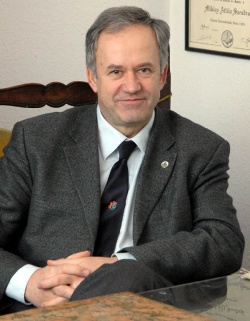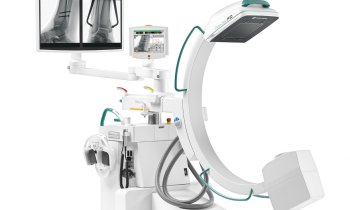The 11th EFORT Congress
2-5 June, Madrid, Spain
This year's European Congress for Orthopaedics, Orthopaedic Surgery and Traumatology, organised by the European Federation of National Associations of Orthopaedics and Traumatology (EFORT) and which will in tandem with the Spanish Orthopaedic and Traumatology Society (SECOT) Congress, is expected to draw 7,500 international participants.

‘For the first time, we are organising plenary sessions to present state-of-the-art treatments in four important subjects in contemporary orthopaedics: arthroplasties, trauma, bone and joint tumours and musculoskeletal infection,’ EFORT President Professor Miklos Szendroi, Director of the Department of Orthopaedics of the Semmelweis University at Budapest, Hungary, told EH reporter Karoline Laarmann .
On 4th June, Professor Miklos Szendroi, renowned specialist in metastasis bone disease surgery, will host the plenary session Bone and joint tumours: Surgical and non-surgical treatments in tumour care in Europe.
Statistically, over 1.2 million new cancer cases are diagnosed annually in the USA alone, and about 25% of these primary tumours (mostly breast, lung, kidney and prostate) can spread or metastasise to the skeleton. While there is rarely a cure for metastatic bone disease, palliative treatment for this painful condition has improved immensely over the last two decades due to external radiotherapy and chemotherapy. Because the tumours weaken bone, pathological fractures are highly likely. Therefore, surgery plays a more and more important role in reducing pain and regaining skeletal function, significantly improving patients’ overall survival rate and quality of life.
‘This change of paradigm in the treatment of metastatic bone and joint tumours leads to an increased need not only for experts but also for general orthopaedic surgeons to acquire skills in tumour diagnosis and to know about therapy management options,’ the professor emphasised. However, the decision to proceed with surgery is complex and must be individualised for each patient: ‘Treatment of metastatic bone disease needs interdisciplinary team work. The patients have to be referred to highly professional oncological teams in specialised medical centres.’
Besides palliative treatment, such as nailing fractures, it is now possible to remove bone metastases radically, in limb-saving surgery, if the tumour is solitary – a demanding intervention for the orthopaedic surgeon. A bone affected by lesions must be removed and replaced by an endoprosthesis. ‘There has been much going on in the development of new special tumour endoprosthesis material and design over the last 35 years,’ he pointed out. ‘Endoprosthesis systems moved from custom-made to a modular models, which give the surgeon more freedom at the operating table. The growth of bone metastasis is a dynamic process; whereas in the past it could have happened that, during the fabrication of custom-made endoprosthesis, the tumour already increased in size, the modular systems can be plugged in step by step as needed. In addition, the worn-out time of the material has extended from five to over 10 years.’
Besides surgical options in solitary metastases of bone, the plenary session will also address the key role of prognostic factors. Above all, a careful evaluation of the therapeutic benefit of surgical interventions for the patient should be carried out. Next to the stage and type of primary cancer, the most important prognostic parameter is performance status, which quantifies a patient’s general well-being.
Questioned about the huge variations in treatment and education strategies in orthopaedic surgery and trauma care across Europe, Prof Szendroi said: ‘This doesn’t necessarily mean that the quality level of treatment is better or worse in the different countries. What I experience, with growing concern, is a gap between the West- and East-European areas, which even deepened during the last economical crisis. As an example, there’s a new endoprosthesis on the market that shows good results for patients suffering arthritis of the ankle joint. In my home country, Hungary, it could not be introduced because of financial limitations.’
At least at the Madrid EFORT congress, European orthopaedic surgeons will have a big opportunity to contribute and share scientific knowledge and findings, as well as to raise awareness of future trends.
21.05.2010








